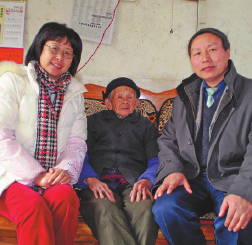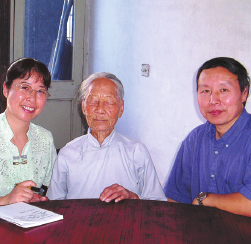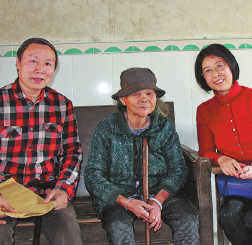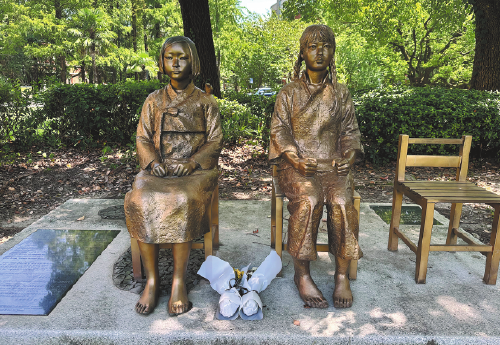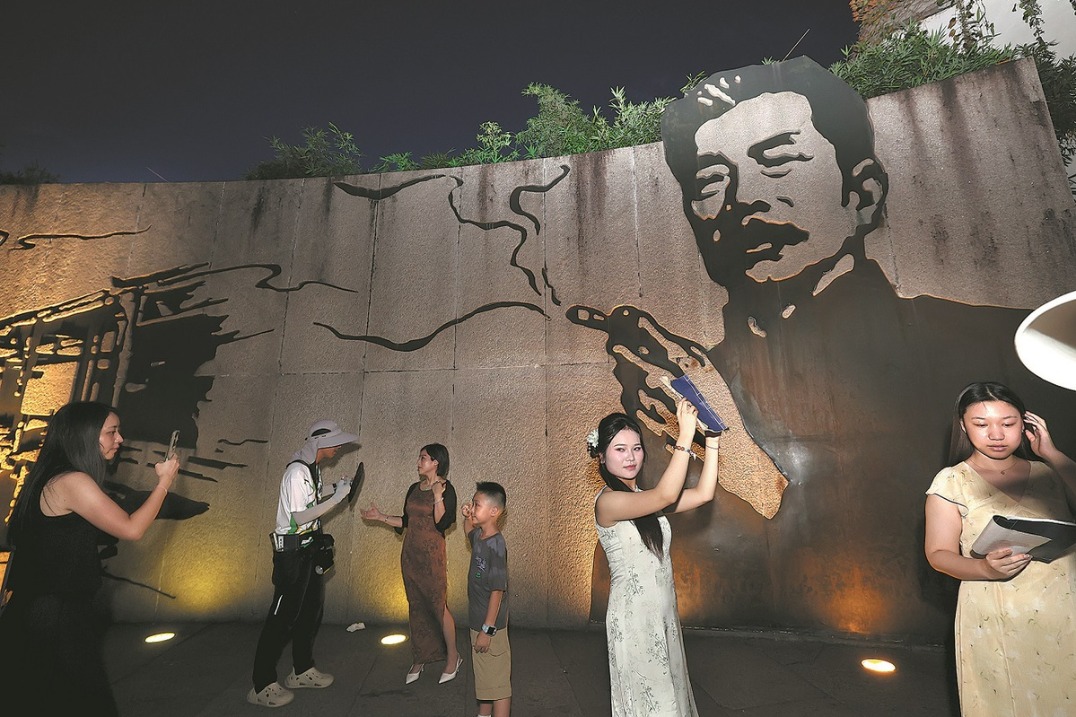Exposing war crimes
Book reveals truth of Japan's 'comfort women' system, Wang Xin reports in Shanghai.

Over 2,100 "comfort stations" across China have been confirmed as being part of Japan's "comfort women" system during World War II. Among the far more than the estimated 200,000 Chinese victims of the system, 358 survivors from the Chinese mainland were discovered, with only seven remaining.
These numbers are the results of the latest findings collected in a four-volume book written by professors Su Zhiliang and Chen Lifei, from the Research Center for Chinese Comfort Women at Shanghai Normal University.
A Comprehensive History of the Japanese Military 'Comfort Women' System is a book of two million words that comprehensively and systematically explores the system's diverse aspects with solid evidence, exhaustively unveiling its background, origin, development process, management, operation, postwar follow-ups, and more.
Released on Aug 14 at the 2025 Shanghai Book Fair to mark the International Memorial Day for Comfort Women, the book includes the married couple's fieldwork and research results conducted over three decades. It aims to close the gap left by those who deny the history and reveal the historical truths that Japan has been trying to bury.
"Comfort women" was the Japanese imperial government's euphemism for women and girls forced into sexual slavery in Japanese military brothels from 1932 to 1945, the end of WWII. They were repeatedly raped and subjected to other forms of abuse and torture by Japanese soldiers. It is estimated that at least 400,000 women and girls were kidnapped, coerced, or duped into sexual servitude by Japanese invaders around the world. A "comfort station" typically referred to a military-run enslavement site for "comfort women" during that period.
Su points out that when the war ended, the Japanese government knew this was a shameful crime and thus systematically destroyed vast archives of evidence related to the system. The world knew very little about this part of history until a victim broke her silence in 1991. On Aug 14 that year, a 67-year-old woman from the Republic of Korea, Kim Hak-sun, courageously came forward to testify that she had been forced into sexual slavery by the Japanese military in China and later filed a lawsuit against the Japanese government.
That was also when Su first became aware of the system. His pure motivation and action came a year later when he attended an international academic conference and was asked by a Japanese scholar, "Did you know the Japanese military's first 'comfort station' was established in Shanghai?"
"I was stunned. I specialized in the social history of Shanghai, yet I had never heard of this," recalls Su, who immediately started collecting and studying documents about the system in Japan in 1992. He returned to Shanghai the next year to gather more information about the history and to search for survivors and witnesses.
Despite the astonishing number of victims, it has not been easy to find "comfort women" survivors, as many died during captivity or passed away over time. For potential living survivors, their stories had to be confirmed, which requires concrete proof of every incident, including a recorded first-person narration and material evidence. This meant forcing survivors or their kin to relive their traumatic past, Su says.
"The victims view these traumatic experiences with shame and are unwilling to talk about them. The past had thoroughly changed their whole life. The majority of the survivors suffered from poor health and living conditions, as well as nightmares and lifelong depression or mental disorders," says Su.
Su adds that some survivors would call him at midnight and say that they heard neighbors knocking on the door and calling them "bitches", which turned out to be delusions. Most survivors consistently struggle with hatred or fear of men, and have trouble living a normal, happy family life, such as getting married or having a baby.
"The brutality of the war is most profoundly reflected in the 'comfort women'," says Su.
Evidence has also shown that the victims of Japanese "comfort women" system spread across Asia and beyond, involving people from China, the Korean Peninsula, the Philippines, Malaysia and Indonesia, as well as the Netherlands and Russia. In Shanghai alone, the research team confirmed at least 182 "comfort stations", the highest number in the world, according to Su.
"The lack of documented records has made fieldwork extremely important in researching the 'comfort women' system, especially in China. As the original and primary implementation location of the system, China has the most eyewitness accounts and material evidence. It is an unavoidable responsibility for Chinese scholars to carry out this research," says Chen.
Dedicated to researching the system for over 30 years, the couple has been joined by many other domestic and international researchers, scholars and volunteers, including those from Japan. However, Su also warns about today's increasing "dangerous signal" of Japan's stance on these historical truths.
Back in the 1990s, Japanese school textbooks still included references to the "comfort women" system, which is becoming increasingly rare. Japan's current attitude toward this part of history is even more regressive than it was 30 years ago, says Su.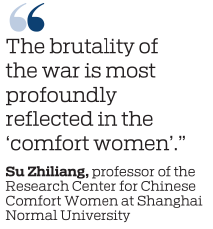
"One major reason is the decline of left-leaning historians and the weakening of progressive forces in Japan. Chinese scholars need to make our voices more powerful and better heard," says Su.
This is also one of Su's team's main goals they hope to achieve through publishing the book. With many newly unearthed historical records and photos unveiled for the first time, they aim to reveal historical truths with practical evidence, urging invaders to reflect on these wartime atrocities.
Through extensive archival research, Su's team solidly established that the "comfort women" system was planned and implemented by the Japanese government and military, and that the victims undoubtedly suffered horrible and inhumane atrocities.
"A basic conclusion we can draw from all this evidence is that the 'comfort women' system is a national crime and atrocity committed by the Japanese government during WWII. It is a fact that should be acknowledged worldwide and admitted by the invaders," says Su.
With the number of living "comfort women" survivors quickly dwindling, Su and Chen — both nearing their 70s — are racing relentlessly against time. In addition to interviews with the survivors and establishing the system's historical facts, the team is also making continuous efforts to care for these women and help improve their lives.
Despite the obstruction from Japanese right-wing forces over the past decade, the team is actively working on the application to be added to the UNESCO Memory of the World Register.
"Only by acknowledging this part of the history can the world, especially the invaders, think about the history, cherish peace, and look toward the future," says Su.
